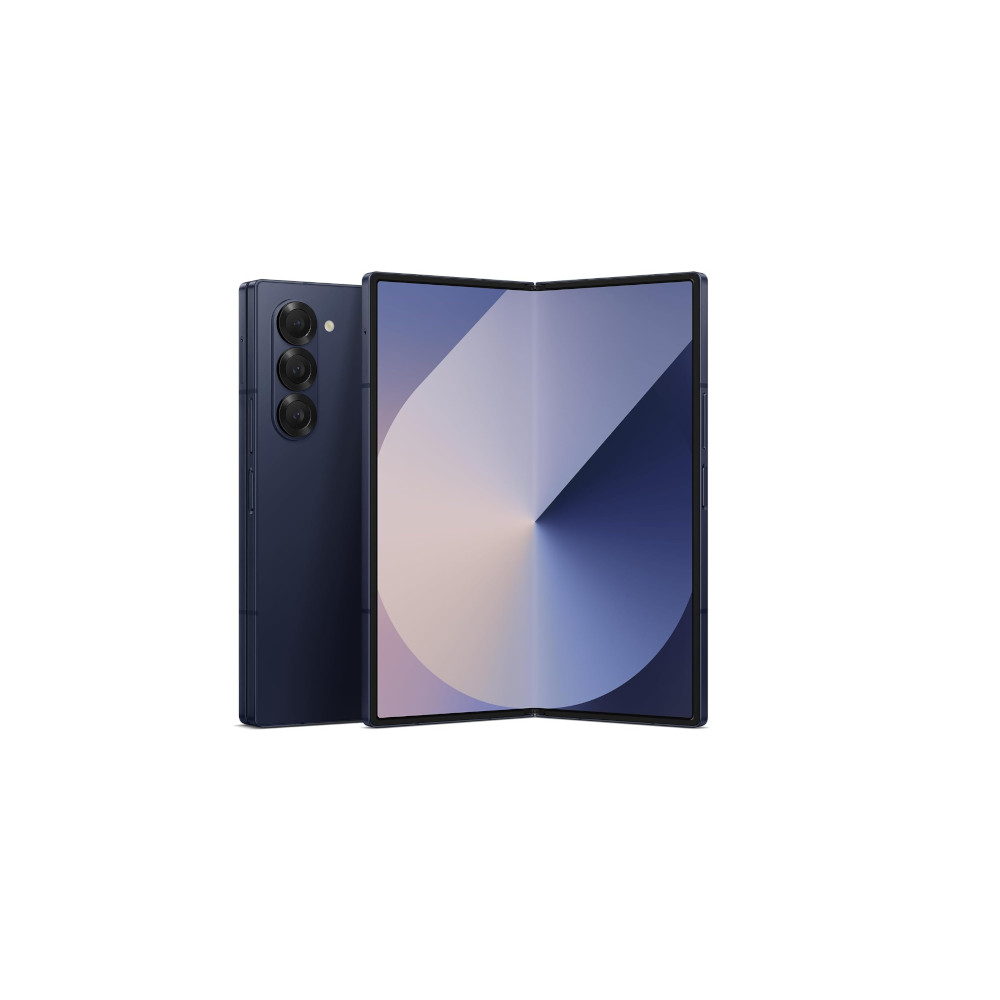Affiliate links on Android Authority may earn us a commission. Learn more.
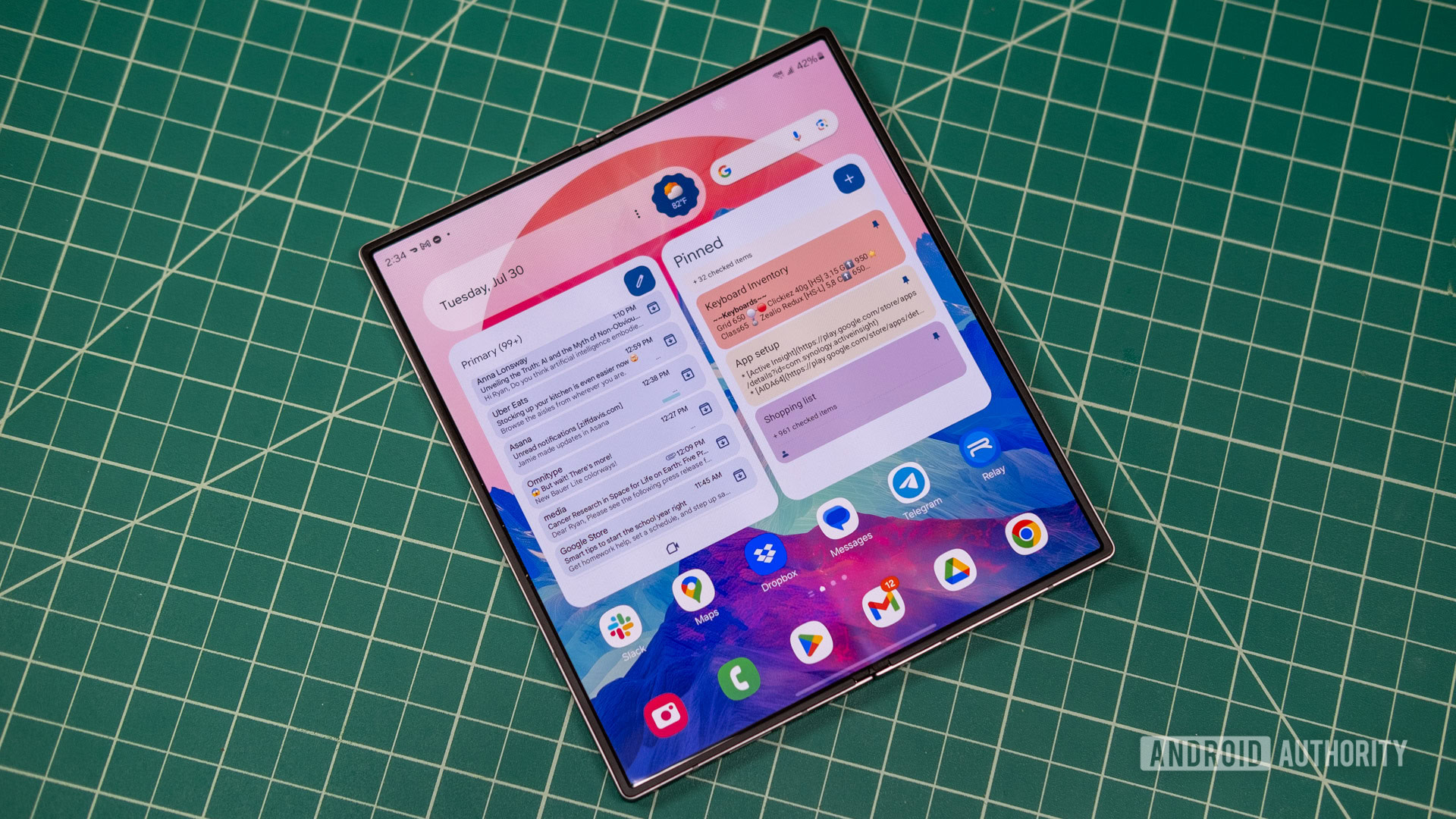

If I didn't have to review other phones, the Samsung Galaxy Z Fold 6 would be the only one I'd use
Published onAugust 5, 2024

Samsung Galaxy Z Fold 6
MSRP: $1,899.99
What we like
What we don't like

Samsung Galaxy Z Fold 6
I’ve been reviewing Android phones long enough to remember when they were fun. Every few months, one OEM or another would try something wacky that ended up falling flat — there were phones with game controllers (Xperia Play), projectors (Galaxy Beam), modular chins (LG G5), and all kinds of weird curves (who could forget the LG G Flex). But through trial and error, the smartphone formula has been refined to the point that most modern devices are nearly identical flat glass slabs. Some are faster or have better cameras, but the fundamentals of mobile computing don’t change when everything is so similar.
Foldables arrived just when traditional phones were getting oppressively boring, and they certainly jazzed things up, but they weren’t very good products. The Samsung Galaxy Z Fold 6, however, is very good. And unlike in past years, I don’t feel the need to qualify that statement.
Samsung has made iterative improvements each year, and with the Galaxy Z Fold 6, it has finally reached an ergonomic milestone that makes the phone work as well as one could hope, considering its mighty price tag. Not only is it the most capable smartphone on the market, it’s one that I don’t mind carrying around all day. If I didn’t need to switch to new phones every few weeks as a reviewer, I’d probably just use the Galaxy Z Fold 6 for the next year.
Samsung’s baby steps add up to a big leap
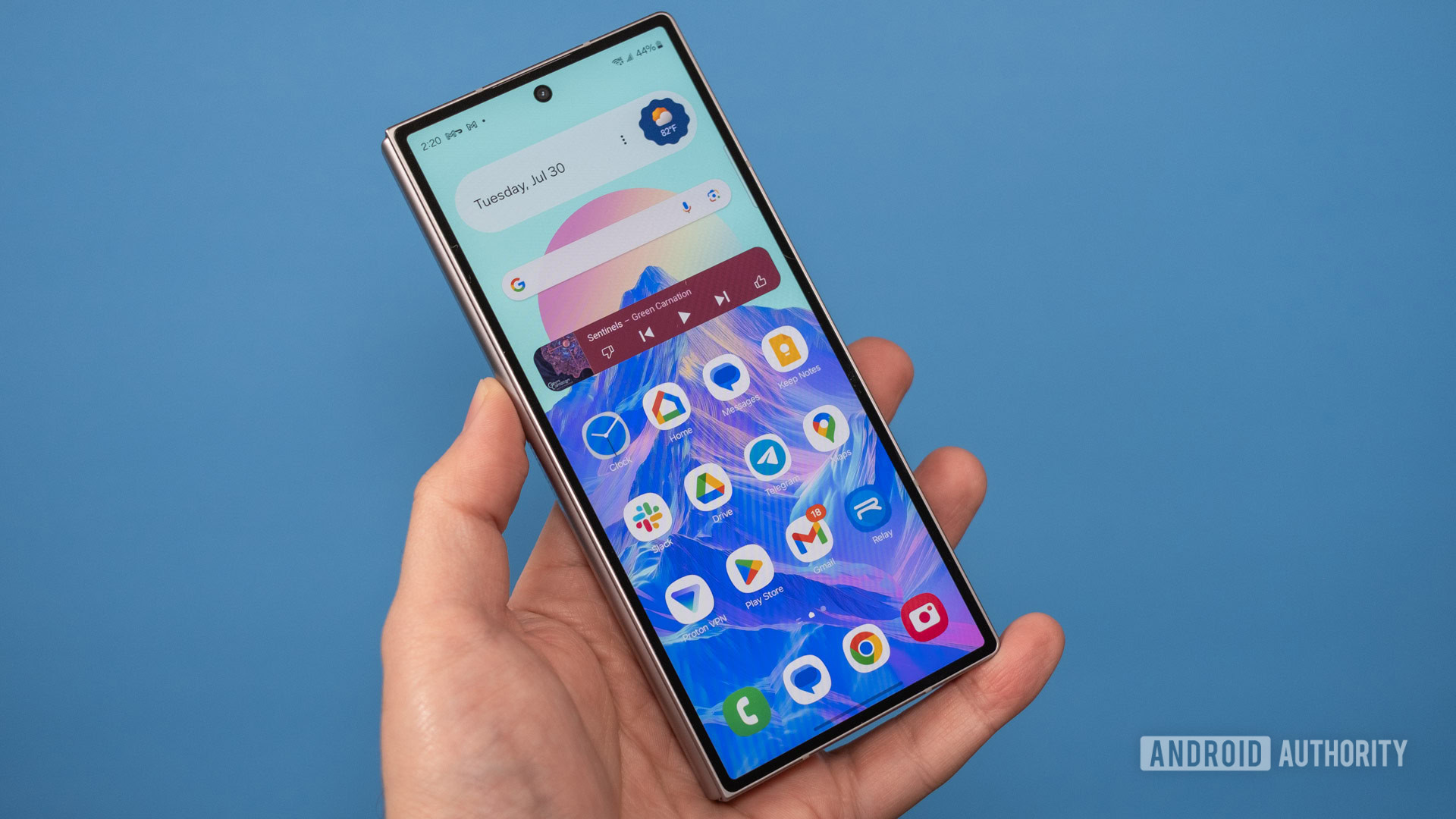
Samsung has gotten to this point at its own pace because there has been barely any competition. Ignoring the Chinese OEMs that don’t figure into Samsung’s biggest markets, Samsung was alone offering tablet-style foldable phones until just the last year or so. That allowed it to take things slow, shaving off a millimeter here and there, flattening the hinge, and reducing the phone’s mass year by year.
The Galaxy Z Fold 6 has flat edges like the Galaxy S24 family (and the iPhone). The aluminum frame is rolled just enough at the edges so it won’t poke you, but there’s still plenty of flat surface to ensure a firm grip. When open, the Z Fold 6 feels a lot like an iPad Mini. It folds up and fits in your pocket when you’re not using it, but it doesn’t feel like something that can fold in half while you’re using it. It’s IP48 rated, so water won’t bother it, but steer clear of particulates like sand, which could get inside the hinge and screw things up.
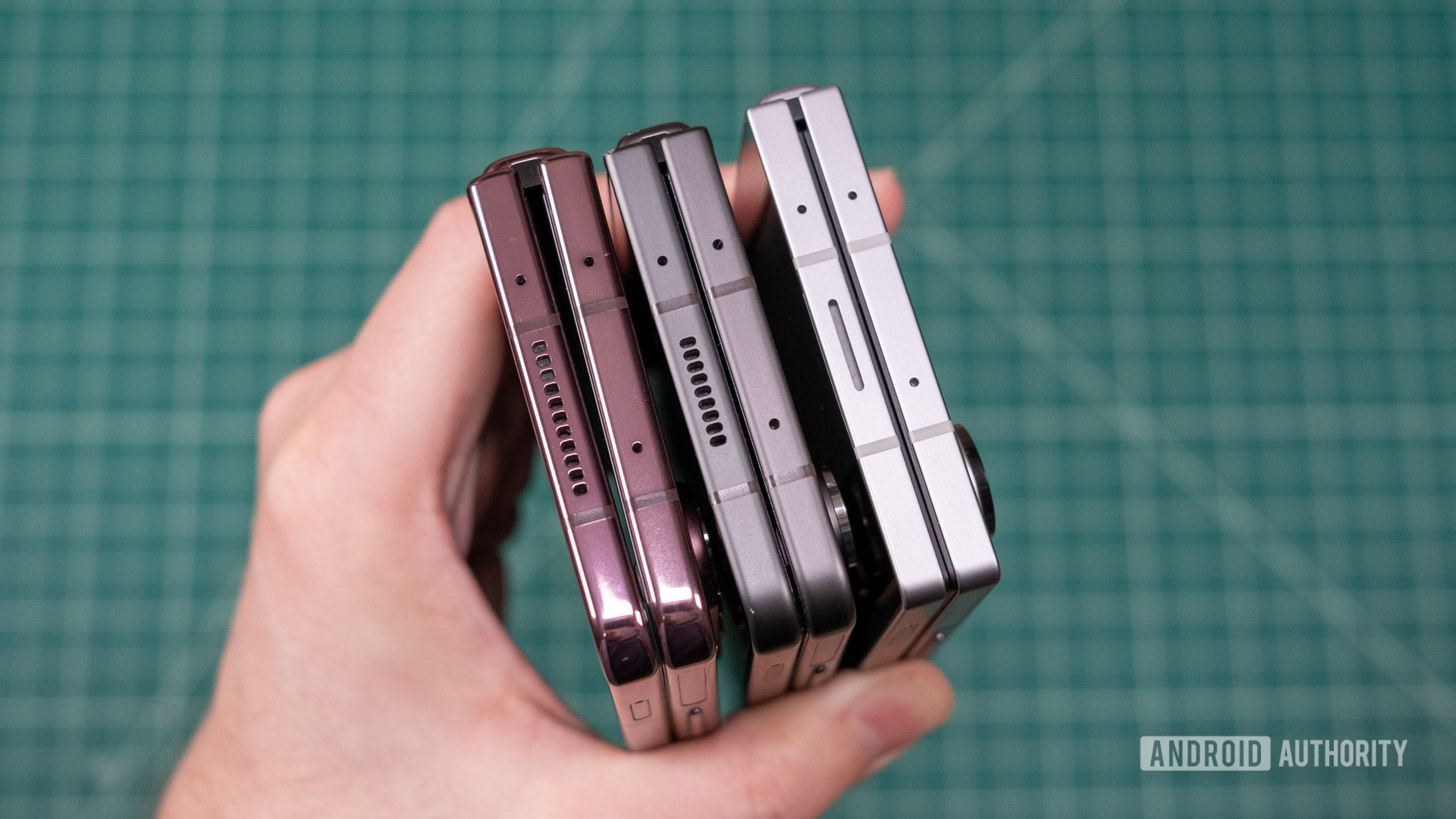
Both OLED panels are sharp and super-bright. Samsung claims 2,600 nits of peak brightness, which isn’t the highest we’ve seen, but it’s still plenty for outdoor use. The cover screen is perfectly visible, and the internal screen is almost as good. The plastic layers of the foldable OLED tend to reflect more light than glass, which makes it a bit harder to read under very bright sunlight.
The original Galaxy Fold had a tiny cover screen — it was about the size of a credit card and useless for almost anything you’d do on a smartphone. But with each update, Samsung inched toward a more refined form factor. The Fold 6’s cover screen is a tenth of an inch larger (diagonal), but more importantly, it’s about 3mm wider. This screen has finally reached a ratio where it renders apps correctly and isn’t too cramped for typing. You don’t have to open up the Z Fold 6 to get things done.
Any lingering prototype vibe of past incarnations is gone — this is the first Z Fold that truly feels done.
The hinge has also been improved over the years. Early on, Samsung’s foldables had big gaps between the two halves, and the hinge side was wider than the other, making the phones slightly triangular. In the last few updates, Samsung foldables have flattened out and slimmed down. The Galaxy Z Fold 6 is 12.1mm thick when folded and 5.6mm thick when open, making it less annoying to haul around even compared to last year’s Z Fold 5, which I already loved. It’s still a big device, but the prototype vibe of past incarnations is gone — this is the first Galaxy Fold that truly feels done.
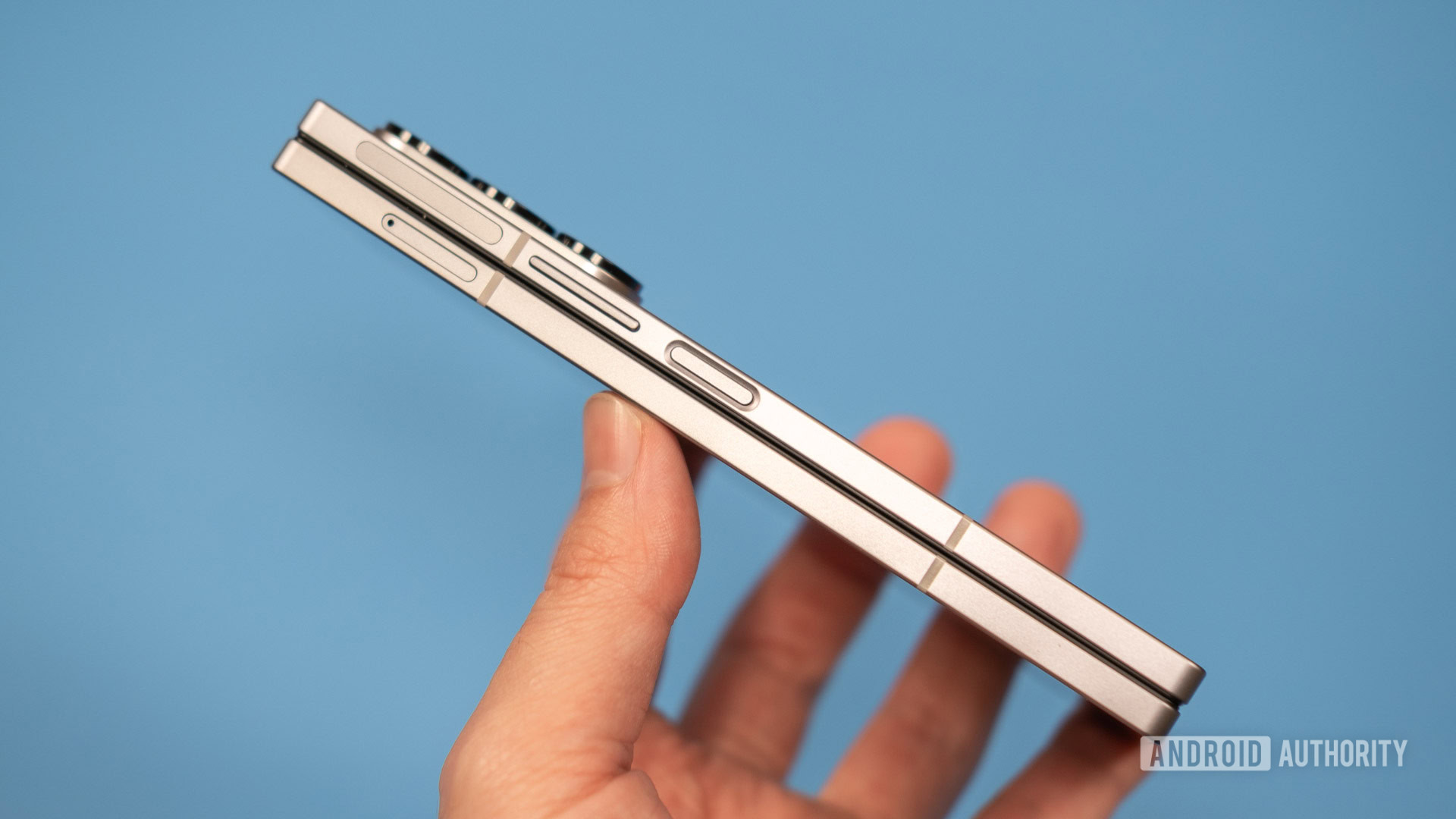
I can actually get work done on the Z Fold 6 that wouldn’t be possible on less capable phones. That’s why I’ve been so interested in foldables over the years — they’re the first phones in years that actually do more. Now that Samsung’s foldables have matured, I would have no problem using the Z Fold 6 exclusively. With past Samsung foldables, I’d use them for stretches of a few weeks before the heft would get to me, and I would welcome my next review unit, which would invariably be a more manageable size. After spending time with the Galaxy Z Fold 6, I don’t have that nagging sense that it’s just too big.
The most useful foldable phone
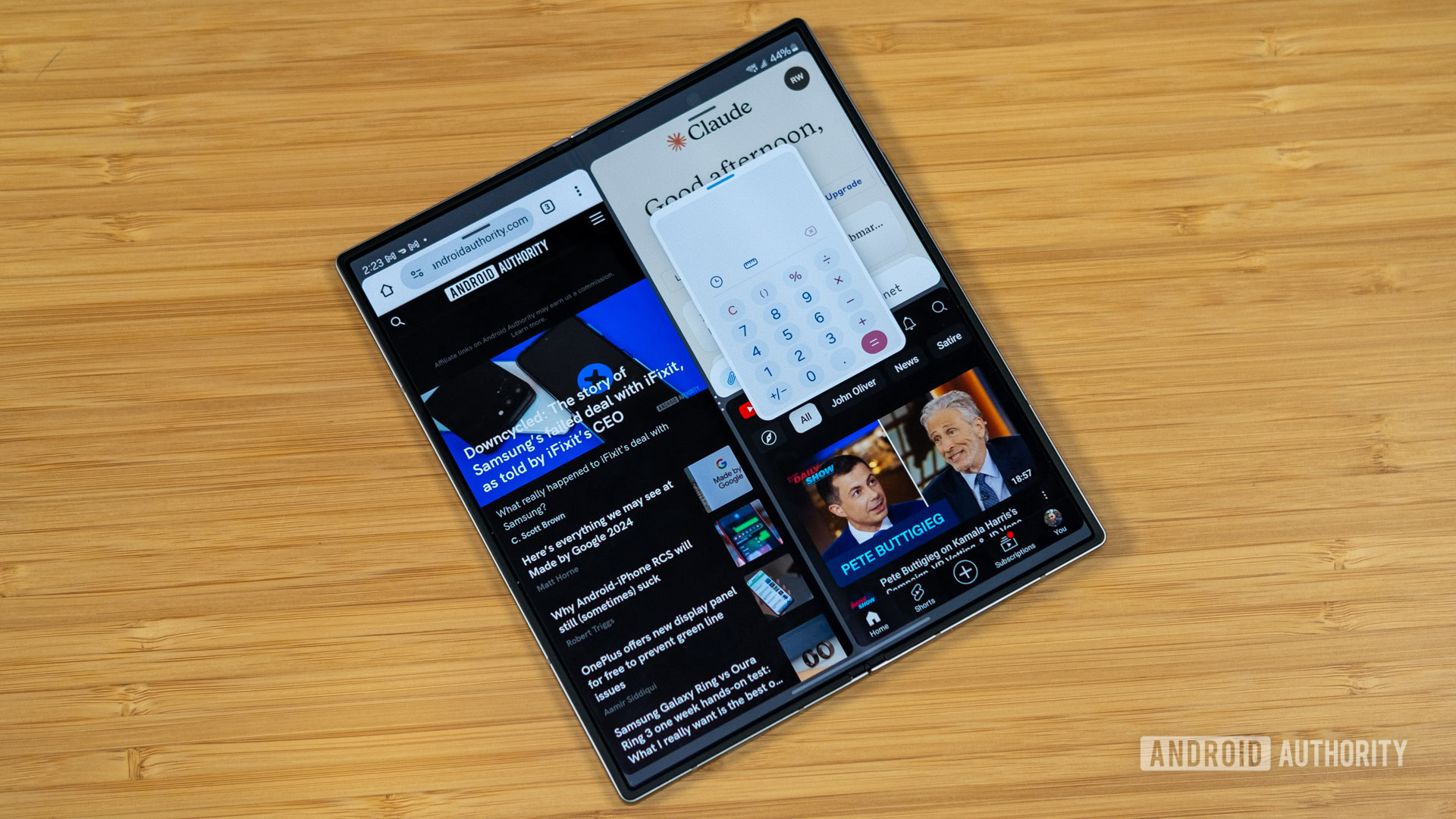
Being able to carry, with relative comfort, a 7.6-inch tablet in your pocket is powerful. You watch video without squinting and leverage apps with tablet interfaces, but that’s true of all tablet-style foldables. The Z Fold 6 sets itself apart by being uniquely ideal for multitasking. Samsung invested early in multi-window functionality on devices that really didn’t warrant it, but that has paid off in spades now that foldables have gained some traction.
Being able to use apps in whatever configuration I need makes all the difference. With a few taps, you can split-screen up to three live-updating apps, and the customizable side panel can provide quick access to your most used shortcuts. You can resize apps, turn them into floating windows, and even save app groups as shortcuts for easy access later. Samsung’s multitasking system is much better for foldables than Google’s take with the Pixel Fold line. The OnePlus Open is at least as good from a hardware perspective, but the software is a mess, in my experience.
With a few taps, you can split-screen up to three live-updating apps.
The Galaxy Z Fold 6 runs Android 14 with Samsung’s One UI 6.1.1 interface. There are a handful of things I don’t love about One UI — for example, that side-scrolling app drawer and the frustrating Samsung keyboard. But I can’t complain too much when Samsung has such a capable window management setup. Likewise, Samsung’s long-term support makes up for the phone’s minor shortfalls. Samsung will update this phone with OS and security patches for seven years, the same as Google promises for its latest Pixel phones.
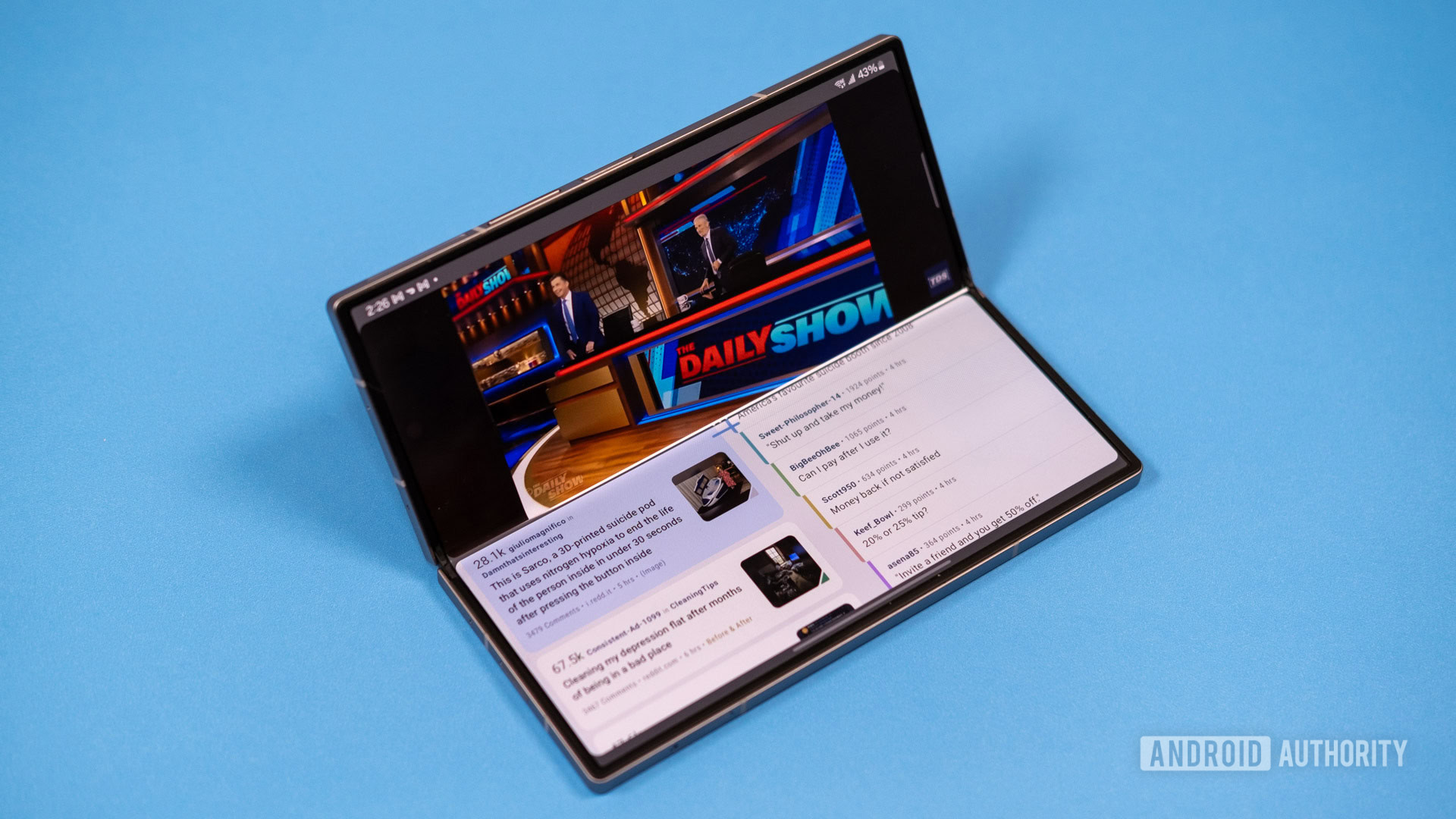
My only real issue with Samsung’s current software is the renewed push toward feature bloat. This is what turned the old TouchWiz interface of Samsung’s phones of yesteryear into such a disaster, and I worry Samsung is going down that same road with AI as it becomes increasingly more baked into One UI. Galaxy AI is scattered throughout the software, offering to refine your photos and rewrite your text replies. I’m just not convinced anyone needs an AI to edit their text messages or social media posts, which, more often than not, seems to involve cramming them full of emoji. I want to like the Sketch to Image AI feature, which jives nicely with S Pen support, but AI-generated “art” almost always disappoints.
Samsung has continued its tradition of equipping its foldables with the latest and greatest Snapdragon processors, which you’d expect for any phone priced like this one. The Snapdragon 8 Gen 3 pushes the benchmarks sky-high, but what’s most impressive is the stability as it runs neck and neck with the Galaxy S24 Ultra in most tests, indicating some impressive thermal management for a phone that’s much larger due to its unique form factor.
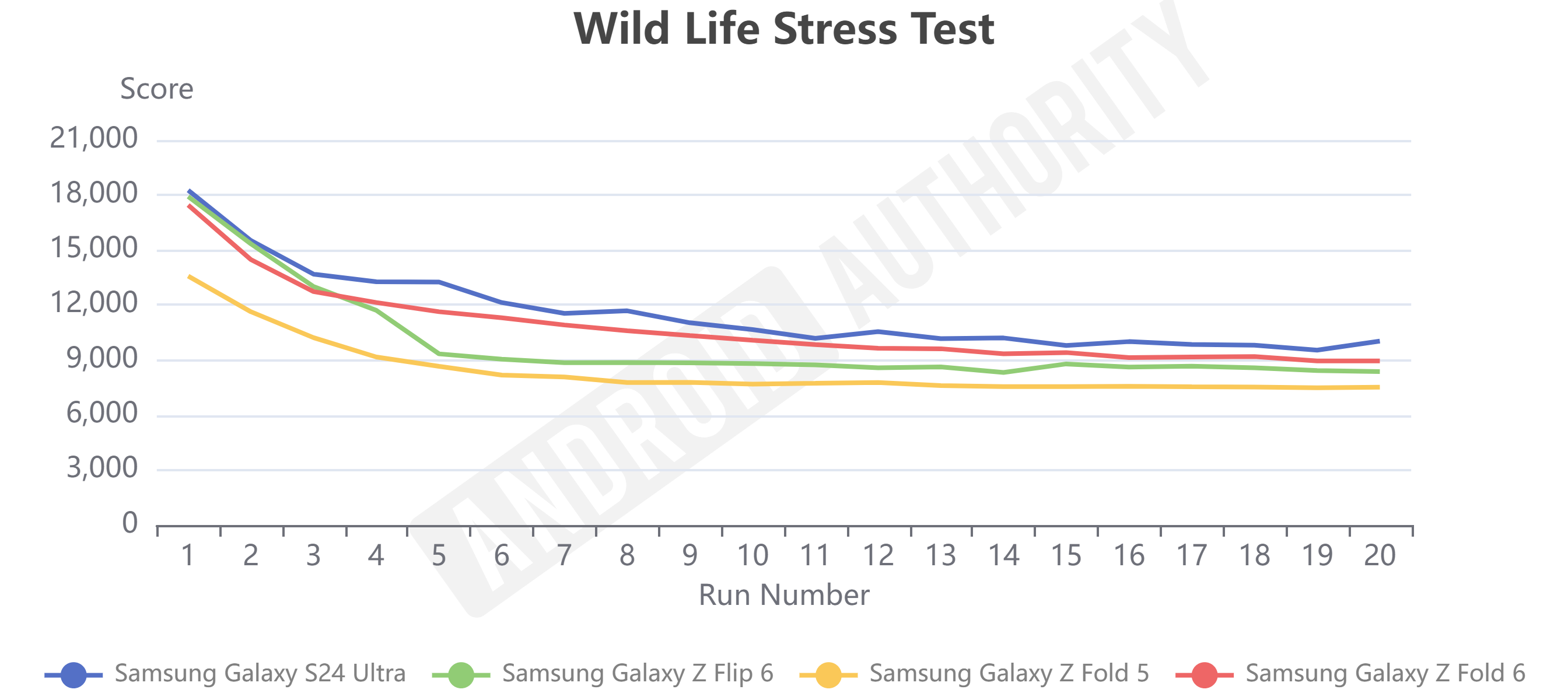
All this power is essential to the Fold 6’s use case. Some lesser phones struggle with basic multitasking, but the Fold 6 can run split-screen and floating apps without slowing down. I’ve never found myself waiting on this phone to catch up, with the exception of the Galaxy AI features, which require time to run data through large language models. Even capturing a dozen or more photos in quick succession and then trying to leave the camera app while they’re processing is silky smooth, something that is not true on most phones.
Still room for improvement
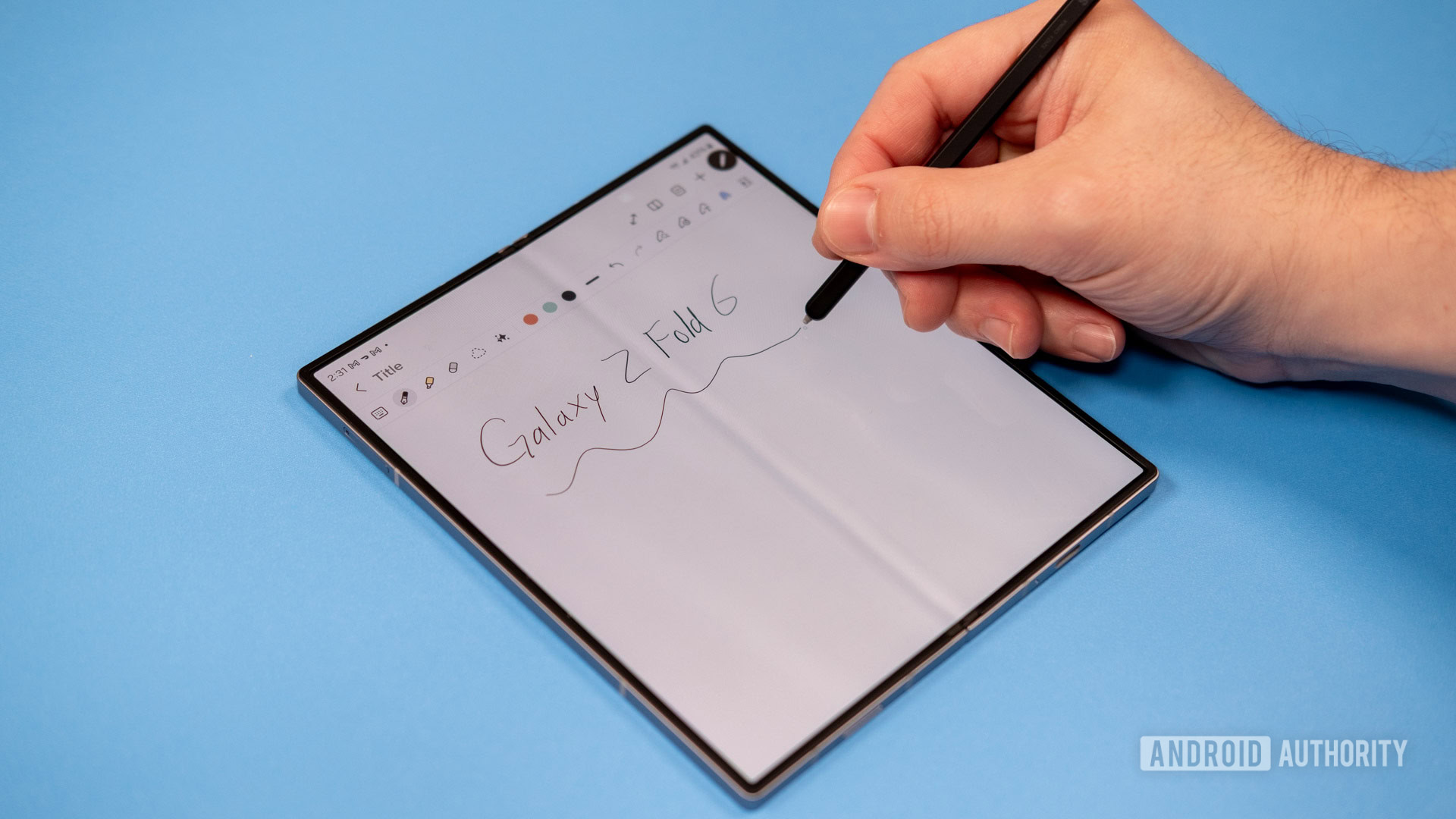
As good as the Galaxy Z Fold 6 is, there’s one big reason most people won’t even consider buying one: the price. To justify almost two grand on a smartphone, you need to be a serious mobile nerd like me. For tablet-style foldables to gain any significant traction, they need to start getting cheaper, but the Fold 6 moves in the wrong direction.
Samsung raised the price a bit this year, from $1,800 to $1,900. The boosted trade-in values for older phones do make the cost more tolerable, but this is still an objectively huge amount to spend on a smartphone.
When Samsung announced the first Galaxy Fold, it was pitched as an aspirational device — the first glimpse of an entirely new form factor. The price started to come down a bit in the next few generations. I had hoped that the increasing foldable sales Samsung likes to crow about would help nudge prices lower, but the trend is reversing instead. After lowering the price slightly for several releases, we’re drifting back toward the $2,000 price tag for the 2019 Fold. It’s a bummer.
For tablet-style foldables to gain any significant traction, they need to start getting cheaper, but the Fold 6 moves in the wrong direction.
Despite all the hardware improvements over the years, one thing that hasn’t gotten much attention is the display crease. It’s still there on the Fold 6, like a tiny plastic canyon running down the middle of the foldable OLED. It’s more visible from oblique angles, but you can always feel it when swiping across the screen. It’s also a bit of a speed bump if you’re using an S Pen stylus with the Fold 6.
We know it’s possible to build foldable phones without such a substantial crease — just look at Motorola’s Razrs and the OnePlus Open. These phones all have little to no visible crease. Admittedly, this is a minor complaint. You won’t notice the crease all the time, and it doesn’t impact usability aside from the speed bump effect with the S Pen.
The battery life could also be better — it’s not bad, but the Z Fold 6 is definitely a phone you’ll have to charge every night, based on my testing. If you use the foldable display too much, you could run low on power before bedtime, too. I’ve been happy enough with the phone’s longevity, but a bigger issue is the charging speed: this phone still tops out at just 25W. It takes too long to recharge, especially considering the Galaxy S24 Ultra can hit 45W.
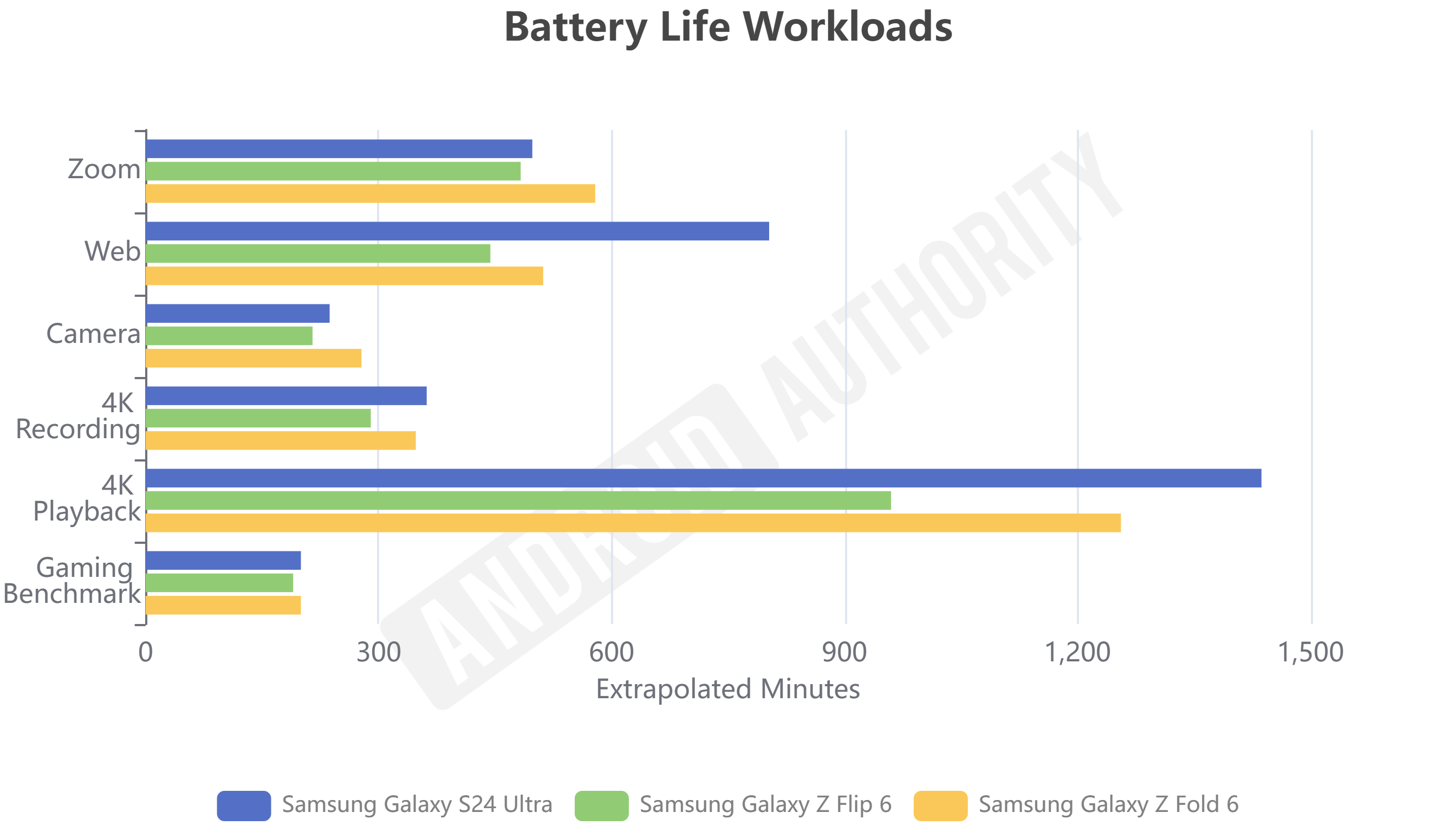
Cameras are another area you still have to compromise with foldables. Even Samsung’s lavishly expensive Galaxy Z Fold 6 can’t match the Galaxy S24 Ultra’s imaging prowess. In a perfect world, the most expensive phone would have the best cameras. It doesn’t, but it does have pretty good cameras.
At the helm is a 50MP wide-angle shooter with optical stabilization and an f/1.8 aperture. There’s also a 10MP 3x telephoto camera that also has optical stabilization and an f/2.4 aperture. Then there’s the 12MP ultrawide camera with an f/2.2 aperture and no optical stabilization. There’s no 108MP sensor, let alone a 200MP shooter like we’ve seen on the Galaxy S phones.
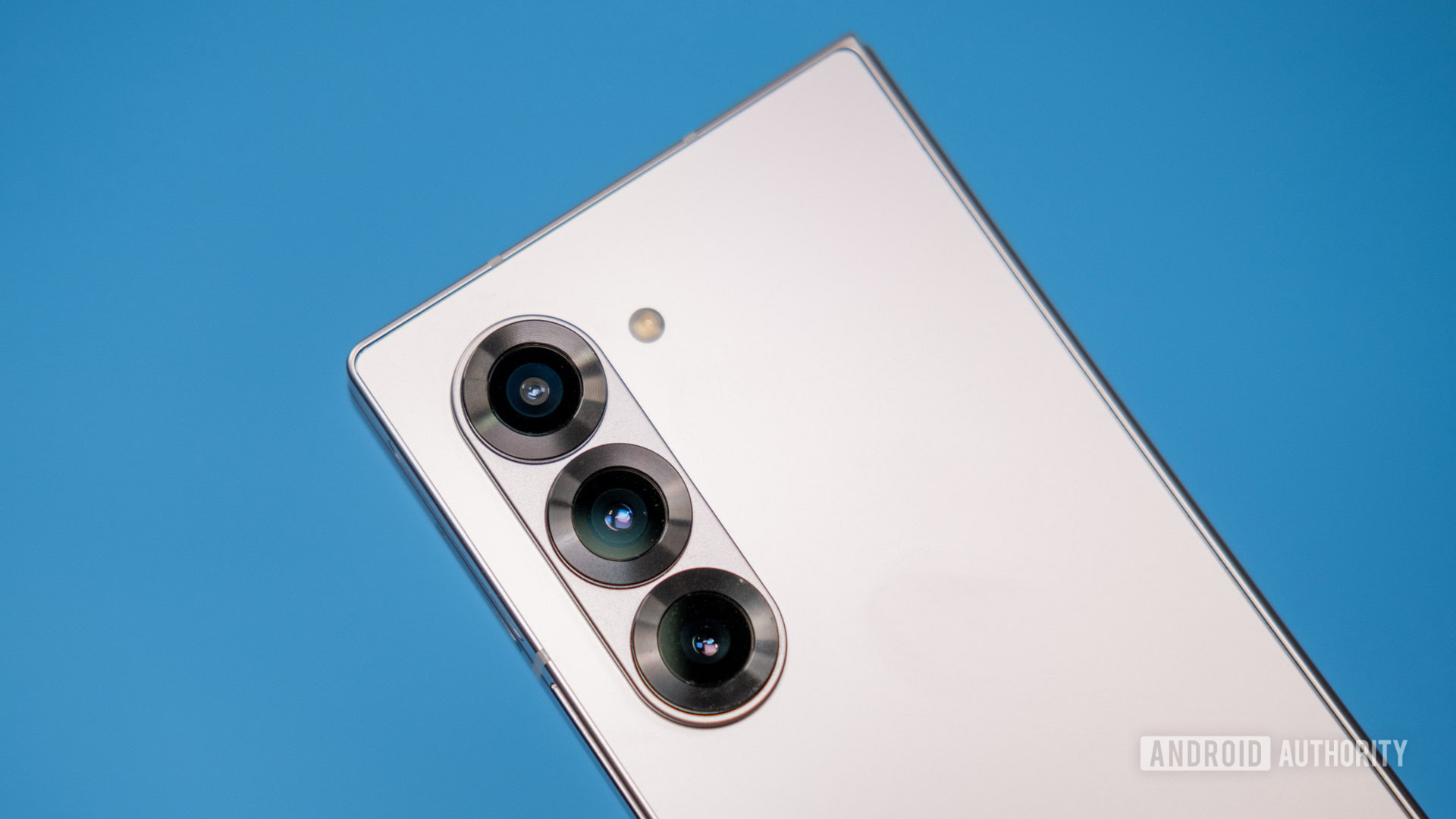
The Z Fold 6 definitely takes good photos, but they’re not really any better than what you can get on the Galaxy S24 and S24 Plus, which have almost identical camera setups. Photos shot with the main sensor have good detail, and the dynamic range is almost as good as Google’s Pixels.
Many of the photos I’ve taken on the Fold 6 look stunning, with vibrant colors and good brightness. However, Samsung leans toward longer exposures, which means taking photos of anything in motion is difficult indoors. You need extremely bright light for action shots, but the phone still takes good photos in the dark. Samsung’s night mode is almost as good as Google’s, but it does require even longer exposures.
The camera’s reach can’t compete with the S24 Ultra or Pixel 8 Pro. The 3x telephoto lens can get you a bit closer to your target, but the total resolution is only 10MP. Any zoom factor over 5x is going to produce photos that look unnaturally smooth and blurry. I’d really like to see Samsung get a periscope-style zoom lens on a foldable, which would help it compete with Google’s superior zoom.
The 12MP ultrawide camera does its job, producing bright wide-angle shots with very little edge distortion. The 123-degree field of view is a little wider than most ultrawide sensors, and I like that the colors remain largely consistent with the primary and telephoto sensors. The ultrawide camera doesn’t have autofocus, which would enable macro photography. This is a very minor complaint, but in fairness, Samsung is asking almost $2,000 for this phone. All complaints are valid.
This phone gives you three different ways to take a selfie. There’s the cover screen’s 10MP camera, the internal under-display 4MP camera, and the main sensors on the back. The cover sensor is good enough, but the 4MP internal one is really only good for video calls—photos from this camera look soft and low-fi. The rear cameras offer the best results. You can turn on the cover screen as a viewfinder so you can flip the phone around. It’s a bit ungainly, but the photos look much better.
Video recording on the Z Fold 6 beats most non-Samsung Android phones. You can record up to 8K/30fps video, but that’s essentially a novelty right now. The 4K/60fps setting looks crisp and vibrant, and the phone’s foldable form factor and software enhancements make it easy to prop the phone up and shoot video from a stationary position.
You can check out selfie samples and uncompressed versions of all our test photos in this Google Drive folder.
Samsung Galaxy Z Fold 6 review: The verdict
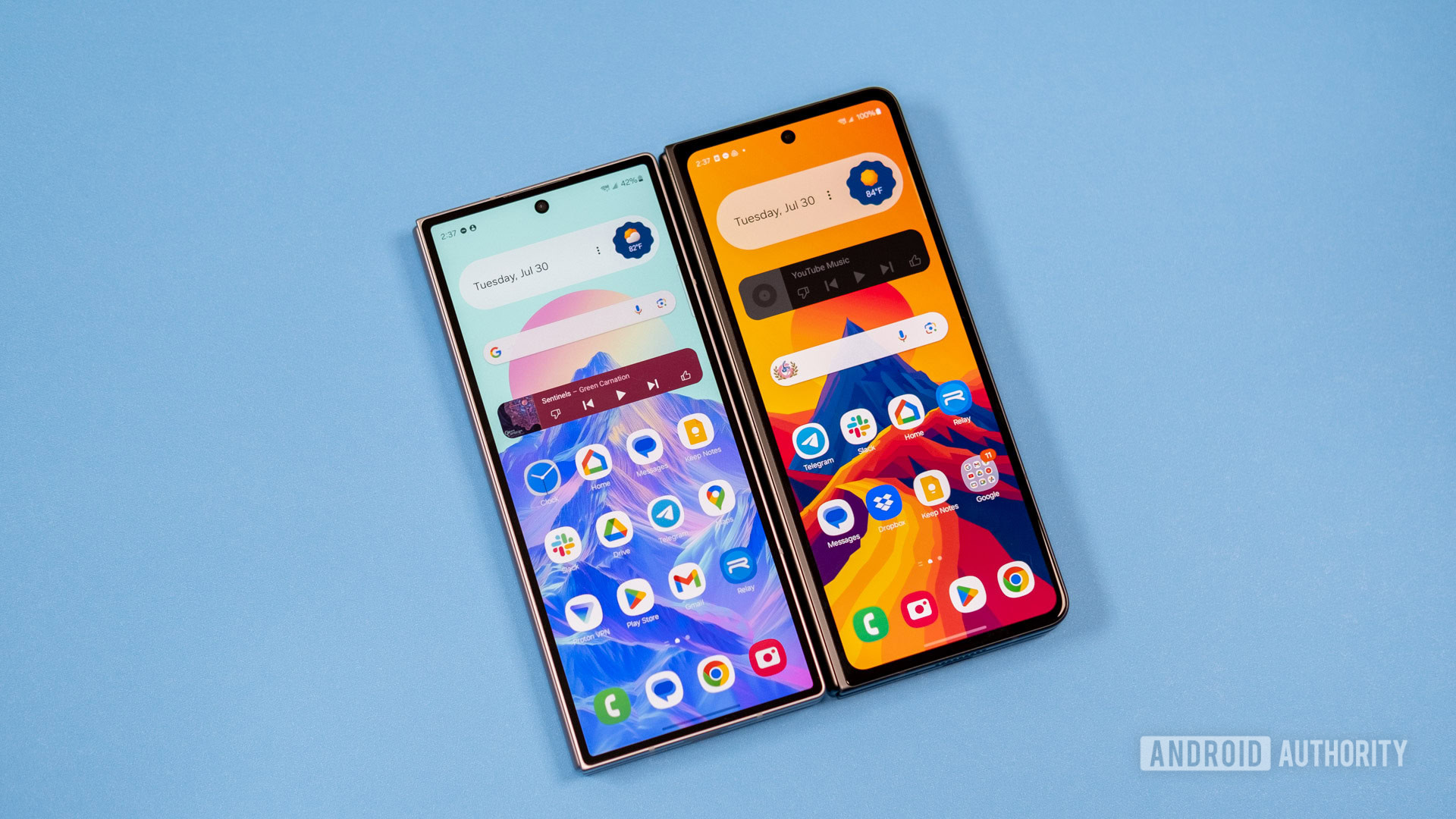
Most people who are in the market for a new phone — even most people reading a phone review on an Android blog — should not buy the Samsung Galaxy Z Fold 6. It’s a super-powerful smartphone, but most people don’t need that much power, and it’s just so damn expensive.
I, and people like me, are the exception that proves the rule. If I were to only use one smartphone, I would want it to be the most capable smartphone I could get. Until the long-rumored Galaxy Fold Slim/Ultra rolls around, that’s the Galaxy Z Fold 6. Samsung’s take on Android has the best multitasking features, which are essential to truly take advantage of the form factor, and it will get reliable updates for seven years.
If I were to only use one smartphone, I would want it to be the most capable smartphone I could get. That's the Galaxy Z Fold 6.
I also feel like I could live with the Z Fold 6 full-time because it’s finally the right size. It’s only a few grams heavier than the Galaxy S24 Ultra, so it’s still not lightweight. However, the new, slimmer design has crossed a crucial threshold, and it no longer feels like a brick in your pocket — well, a small brick, maybe.
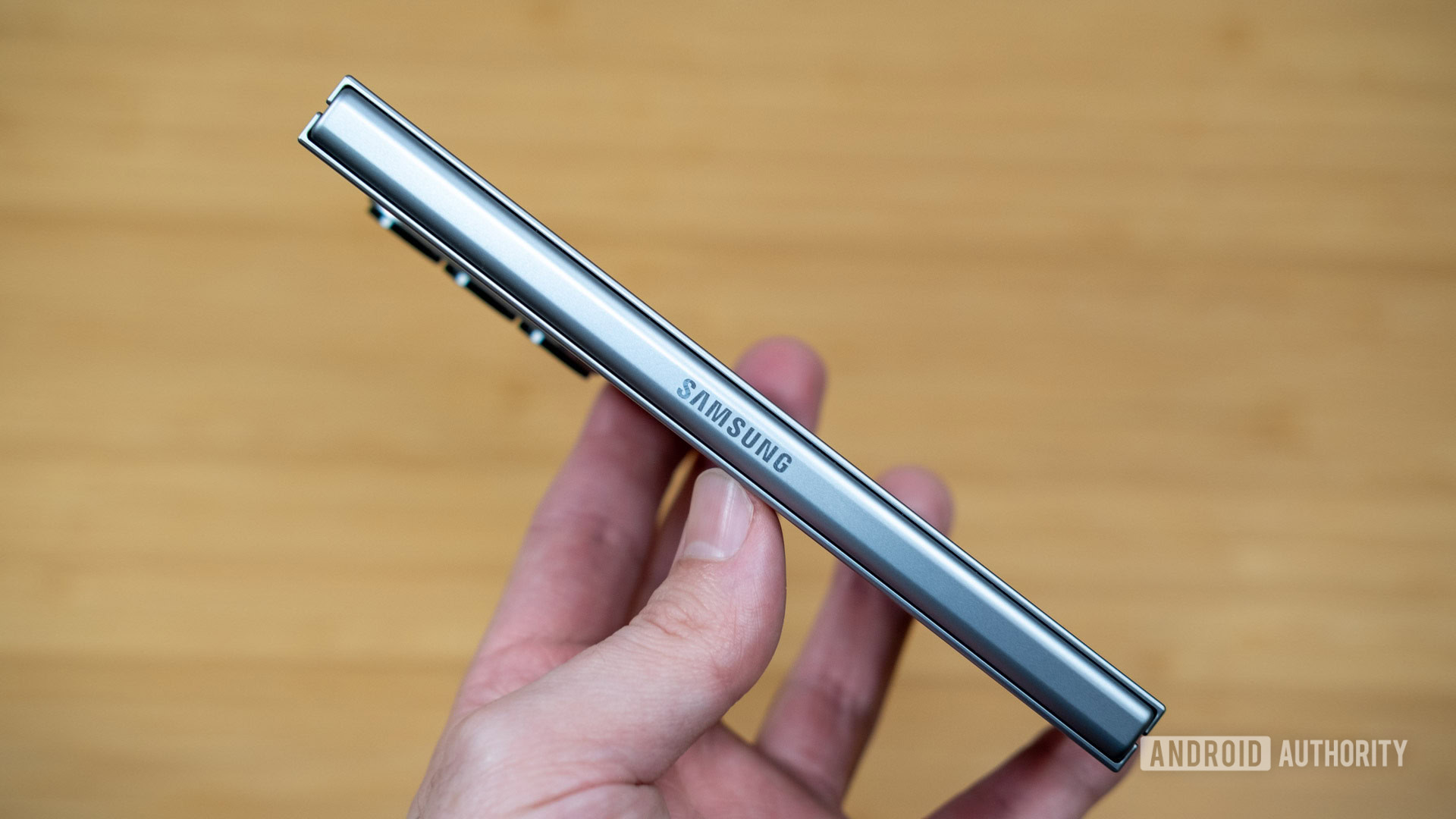
The cameras, battery, and display crease could all use a little work, but these shortcomings don’t make the Z Fold 6 a bad phone. The price is the one unavoidable dealbreaker. Even a mobile nerd like myself would struggle to justify the full $1,899 price tag, but Samsung does have generous trade-in deals. If you can get the price down closer to $1,000 by trading in your old phone, then the Z Fold 6 starts to make sense for the most demanding users.
So, while I might be able to live happily ever after (for 12 months or so) with the Galaxy Z Fold 6, that is not my lot in life. I’m moving on to the next phone review, and I’ll be a little sad to take my SIM card out of the Galaxy Z Fold 6.
